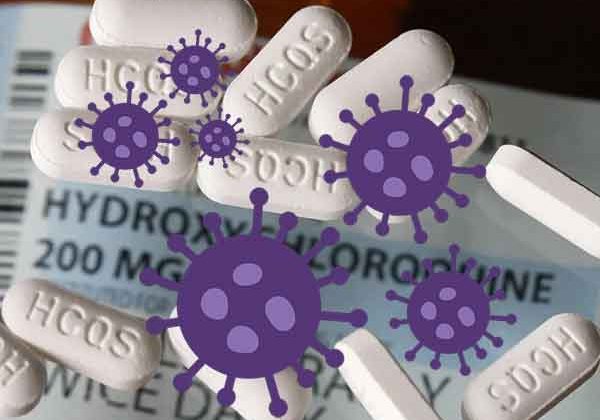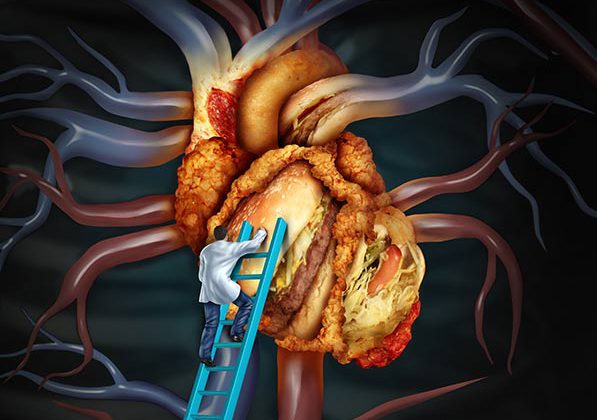Vitamin D and Cardiovascular health
Maria Bonnici
It is well-known that vitamin D supplementation improves bone strength and deficiency leads to rickets in children and osteoporosis in adults….
It is well-known that vitamin D supplementation improves bone strength and deficiency leads to rickets in children and osteoporosis in adults.1 Through observational studies it was noted that vitamin D deficiency is an independent risk factor for cardiovascular disease.2,3 In 2008, Giovannucci et al., reported that in The Health Professional Follow-Up Study which was conducted on 50,000 men, those men who were deficient in vitamin D were twice more likely to suffer from a myocardial infarction than those with adequate levels.4 Additionally, in a cohort of patients, Ford et al., identified a statistically significantly association between low vitamin D levels and obesity, glucose intolerance, metabolic syndrome and hypertension, which all increase the risk of cardiovascular disease.5 This manuscript will review how vitamin D deficiency may predispose to coronary problems and how adequate vitamin D stores may improve cardiovascular health.
Vitamin D comes in two forms, ergocalciferol (vitamin D2) and cholecalciferol (vitamin D3). Vitamin D2 is found in mushrooms and specific plants e.g. alfalfa, whilst vitamin D3 is primarily found in oily fish. Both can also be found in fortified foods or supplements. Additionally, vitamin D3 can be synthesised cutaneously in humans from irradiation of 7-dehydrocholesterol by ultraviolet B radiation.
The liver converts vitamin D to 25-hydroxyvitamin D [25(OH)D], or calcidol, which is the major circulating metabolite and reflects vitamin D intake and endogenous production. Serum measures of 25(OH)D reflect the true vitamin D status. 25(OH)D is then converted, primarily in the kidneys, to the active form, 1,25-dihydroxyvitamin D [1,25(OH)2D] or calcitriol. This hormone maintains bone health and cardiovascular health. One must note that this active form does not correlate with the overall vitamin D status of the person and therefore its assays are not clinically useful.1 Calcitriol, together with its receptor – present throughout the body including the vascular smooth muscle, endothelium and myocardium – in turn bind to retinoic acid x-receptor and serve as a nuclear transcription factor. This alters gene function including protein synthesis. Indirectly or directly vitamin D has the power to regulate over 200 genes, including those responsible for renin production in the kidney, growth and proliferation of both cardiomyocytes and vascular smooth muscle cells, insulin production in the pancreas and the release of cytokines by lymphocytes.1
Experimental studies in vitamin D-deficient animals have shown that they have an increased risk of hypertension, atherosclerosis and left ventricular hypertrophy.6 In humans it was found that vitamin D inhibits renin gene expression and therefore it lowers down blood pressure through the rennin-angiotensin pathway.7 Detrimental cardiovascular effects were found with hyperparathyroidism which could be the result of chronic vitamin D deficiency. Vitamin D deficiency leads to decrease in intestinal calcium absorption which in turn triggers parathyroid hormone release and eventually secondary hyperparathyroidism. An increase in parathyroid hormone levels leads to mobilization of calcium from bone, increased renal tubular calcium reabsorption and increased renal production of 1,25(OH)2D. In 2003, Vestergaard and Mosekilde reported that patients who underwent surgical parathyroidectomy due to hyperparathyroidism had approximately 40% lower relative risks of myocardial infarction and stroke.8 Moreover, an observational study on elderly patients found that those elderly individuals with elevated parathyroid hormone had a doubling-mortality when compared with those elderly with a normal parathyroid hormone.9 The physiology behind this is that an increased parathyroid hormone level is associated with an increase in both blood pressure and myocardial contractility. This eventually leads to myocardial hypertrophy, apoptosis, and fibrosis of both the left ventricle and the vascular medial smooth muscle.10 Furthermore, Andersson et al. found that in patients with moderate or severe chronic kidney disease, vitamin D deficiency and/or an increase in parathyroid hormone predisposes to calcification of the heart valves and myocardium.11
Vitamin D has anti-inflammatory properties;12 in fact, low vitamin D levels increase systemic inflammation, evidenced by elevated serum C-reactive protein and interleukin-10.10 Elevated circulating concentrations of pro-inflammatory cytokines could contribute to the pathogenesis of congestive heart failure. On the other hand, a recent double-blind, randomized, placebo-controlled trial has suggested that vitamin D supplementation reduces the inflammatory milieu in congestive heart failure patients.13
Who needs testing for vitamin deficiency or vitamin D supplementation?
Testing and supplementation is not recommended for everyone. These may be advised for people who are in long term care, bed-bound, or there is a medical condition which is indicative of vitamin D deficiency such as hypocalcaemia and hypophosphataemia. Patients with a history of bone fracture or osteopenia/osteoporosis should also be investigated for possible supplementation. On the market there are many different vitamin D preparations with the most commonly available being vitamin D2 and vitamin D3. It is recommended to take vitamin D3 when possible because it is the naturally occurring form of vitamin D. Obviously supplementation depends on the severity of the vitamin D deficiency. If the vitamin D levels are <20ng/ml, the treatment usually includes 50,000 IU of vitamin D2 or D3 once or more per week for 6-8 weeks, and then 800-1000 IU of vitamin D daily. If the vitamin D levels are 20-30ng/ml, the recommended treatment is 800-1000 IU daily for a 3 month period. Once normal levels of vitamin D are achieved it is recommended to continue with 800 international units daily. In people who have medical conditions which predispose to low vitamin D levels, the recommended dose of vitamin D will be determined on an individual basis.1
References
- Holick MF. Vitamin D deficiency. N Engl J Med. 2007; 357:266-81.
- Vanga R, Good M, Howard PA, Vacek JL. Am J Cardiol. 2010. Sep; 106:798-805.
- Teng M, Wolf M, Ofsthun MN, Lazarus JM, Hernan MA, Camargo CA et al. Activated injectable vitamin D and hemodialysis survival: a historical cohort study. J Am Soc Nephrol. 2005; 16: 1115–1125.
- Giovannucci E, Liu Y, Hollis BW, Rimm EB. 25-hydroxyvitamin D and risk of myocardial infarction in men: a prospective study. Arch Intern Med. 2008; 168:1174-80.
- Ford ES, Ajani UA, McGuire LC, Liu S. Concentrations of serum vitamin D and the metabolic syndrome among US adults. Diabetes Care. 2005; 28:1228–1230.
- Simpson RU, Hershey SH, Nibbelink KA. Characterization of heart size and blood pressure in the vitamin D receptor knockout mouse. J Steroid Biochem Mol Biol. 2007. 103:521–524.
- Li YC. Vitamin D regulation of the renin-angiotensin system. J Cell Biochem. 2003. 88:327–331.
- Vestergaard P, Mosekilde L. Cohort study on effects of parathyroid surgery on multiple outcomes in primary hyperparathyroidism BMJ. 2003. 327;530–534.
- Bjorkman MP, Sorva AJ, Tilvis RS. Elevated serum parathyroid hormone predicts impaired survival prognosis in a general aged population Eur J Endocrinol. 2008. 158;749–753.
- Zittermann A. Vitamin D and disease prevention with special reference to cardiovascular disease. Prog Biophys Mol Biol. 2006. 92;39–48.
- Andersson P, Rydberg E, Willenheimer R. Primary hyperparathyroidism and heart disease—a review. Eur Heart J. 2004. 25;1776–1787.
- Mathieu C, Adorini L. The coming of age of 1,25 dihydroxyvitamin D3 analogs as immunomodulatory agents. Trends Mol Med. 2002. 8:174–179.
- Schleithoff SS, Zittermann A, Tenderich G, Berthold HK, Stehle P, Koerfer R. Vitamin D supplementation improves cytokine profiles in patients with congestive heart failure: a double-blind, randomized, placebo-controlled trial Am J Clin Nutr. 2006. 83: 754–759.




